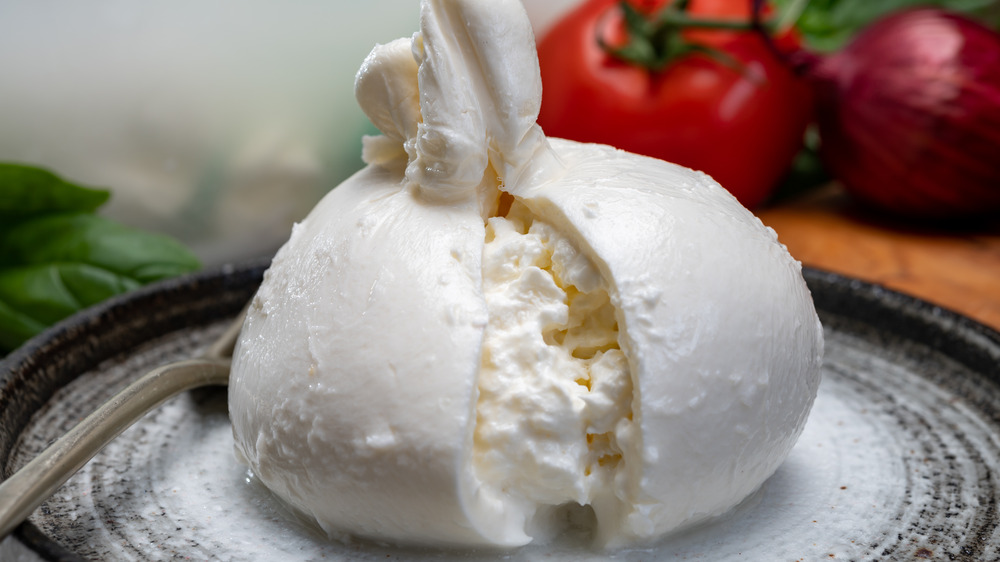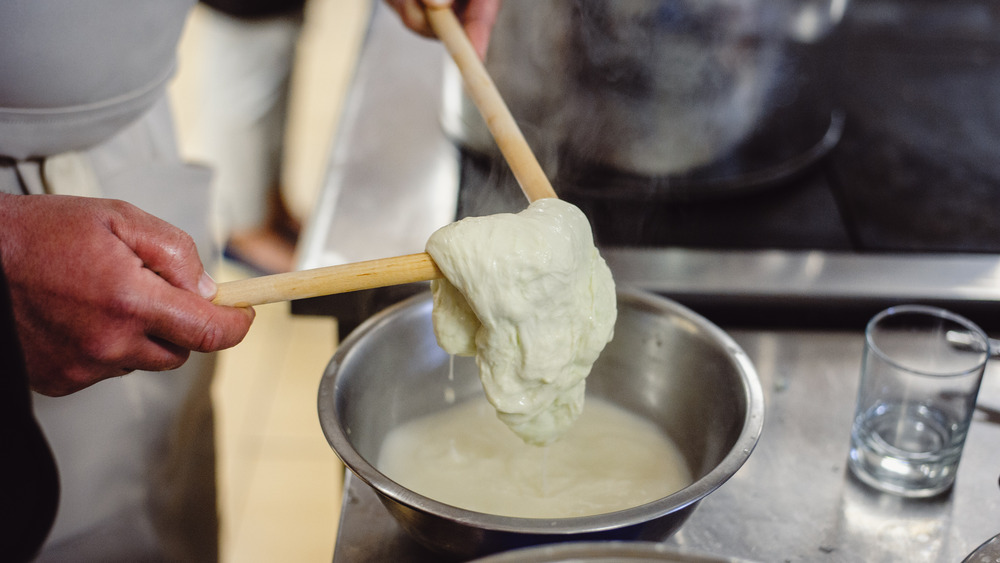The Big Difference Between Mozzarella And Burrata Cheese
You've eaten mozzarella with summer tomatoes and fresh basil in Caprese salads. You've watched burrata be sliced into an oozing cascade in countless cheese-pull videos on Instagram. If you're a dairy lover, you enjoy these two Italian delicacies with great frequency. But can you explain how they're different? Mozzarella and burrata both hail from the south of Italy and start with the same product — either cow's milk or water buffalo milk for mozzarella di bufala – but end in two very different, (sometimes) government-protected types of cheese (via The Kitchn).
To understand the difference between mozzarella and burrata, you must first familiarize yourself with the mozzarella-making process. Mozzarella, first produced in the Campania region of Italy in the 1100s, is made by adding rennet and starter bacteria to pasteurized milk, La Cucina Italiana explains. This creates curd, which mozzarella makers then separate from whey (a liquidy, protein-rich by-product) and knead and stretch in hot water until it resembles the plump, shiny, bright white cheese known as mozzarella. Unlike firmer cheeses such as gorgonzola or Parmigiano-Reggiano, mozzarella is eaten fresh, not aged, and is best consumed immediately after it's made (via The Kitchn).
How burrata is made
Burrata, which translates to "buttered," arrived on the cheesemaking scene much later than mozzarella (via The Kitchn). In 1956, Pugliese farmer Lorenzo Bianchino Chieppa was unable to transport his cows' fresh cream due to heavy snowfall in the region, according to Eataly. Chieppa didn't want to waste the cream, so he preserved it inside a hollow pouch of fresh mozzarella, and Burrata di Andria IGP was born. The cheese is made the same way to this day: as a luxurious way to make use of the delicious leftovers from mozzarella making.
The famously creamy, oozy interior of burrata cheese is called stracciatella and contains not only cream but also the smaller, stringier bits of leftover mozzarella curd called ritagli, or rags (via The Kitchn). You can find the milky mess that is stracciatella in specialty stores or at restaurants that serve it on toast for $9 a piece — totally worth it, according to Eater. Now that you know the difference between mozzarella, burrata, and stracciatella, you should probably taste-test all three to solidify your knowledge.

